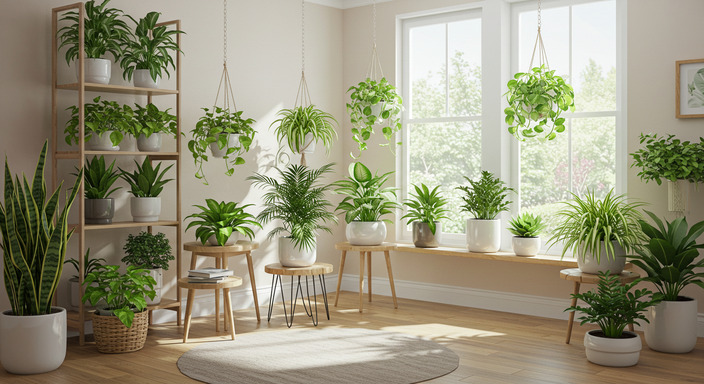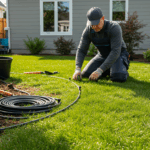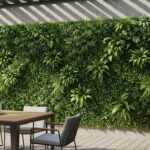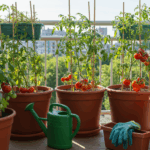Are Low Maintenance Plants the Solution to Modern Living?
In a world where time is a precious commodity, have you ever pondered the possibility of maintaining a vibrant, lush home environment with minimal effort? This question resonates with many urban dwellers who seek to balance busy lifestyles with the innate human desire to connect with nature. The surge in popularity of low maintenance plants is a testament to this trend. These resilient plants are not only forgiving of neglect but also transform spaces into green sanctuaries. Cultivating an understanding of low maintenance plants is essential for anyone looking to add a touch of greenery without significant time investment. This article delves into the characteristics, benefits, and considerations of these botanical marvels, providing comprehensive insight suitable for both seasoned plant enthusiasts and those just beginning their journey.
Understanding Low Maintenance Plants: Characteristics and Examples
Low maintenance plants are characterized by their adaptability and resilience to a variety of environmental conditions. They often require minimal care, making them ideal for individuals with busy schedules or those new to plant care. Many of these plants are drought-resistant, can thrive in low light, and do not require frequent pruning or watering. Common examples include the Snake Plant, ZZ Plant, and Pothos, all of which are revered for their ability to withstand weeks without attention and still flourish.
| Characteristics | Examples | Benefits |
|---|---|---|
| Drought-resistant | Cacti, Succulents | Minimal watering needed |
| Low-light tolerant | Snake Plant, ZZ Plant | Thrives in dimly lit areas |
| Non-toxic | Spider Plant, Bamboo | Safe for pets and children |
| Air-purifying | Pothos, Peace Lily | Improves indoor air quality |
These plants add aesthetic value and functionality to any space, acting as natural air purifiers and contributing to mental well-being by reducing stress and enhancing mood. Given their versatility, low maintenance plants are an attractive option for both home and office environments.
The Science Behind Plant Resilience
What makes certain plants more resilient than others? The answer lies in their physiological adaptations. Low maintenance plants often exhibit features such as thick, waxy leaves that reduce water loss, extensive root systems that maximize water uptake, and slow growth rates that conserve energy. These evolutionary traits have enabled these plants to survive in harsh conditions, from arid deserts to low-light forest floors. Studies highlight that such resilience not only benefits the individual plant but also contributes to ecosystem stability by providing habitats for various organisms.
“The greatest threat to our planet is the belief that someone else will save it.” – Robert Swan
Installing low maintenance plants in urban areas fosters a unique opportunity to reconnect with nature, reducing the human footprint while enhancing personal and environmental health.
Popular Varieties of Low Maintenance Plants
1- **Snake Plant (Sansevieria):** Known for its striking, upright leaves and air-purifying qualities, the Snake Plant is nearly indestructible.
2- **ZZ Plant (Zamioculcas zamiifolia):** Valued for its glossy leaves and tolerance to low light, the ZZ Plant is a low-effort charmer.
3- **Pothos (Epipremnum aureum):** With its trailing vines and heart-shaped leaves, Pothos is both stunning and easy to propagate.
4- **Spider Plant (Chlorophytum comosum):** With its spider-like offshoots and arching leaves, this plant is non-toxic and pet-friendly.
Choosing the right plant involves considering lifestyle and environmental conditions, ensuring that the plant will thrive without undue stress for the owner.
Integrating Low Maintenance Plants into Your Home
Integrating low maintenance plants into your home can be both an enriching and practical endeavor. Begin by assessing the natural light in each room, as some plants may thrive better with indirect sunlight while others require shadier conditions. Consider the humidity levels as well; certain plants like ferns and peace lilies flourish in higher humidity environments. Placement is key—plants should be situated where they can grow without restriction and where they add aesthetic appeal to the home decor. Consider using decorative pots to enhance the visual impact of these plants, and rotate them periodically to ensure even growth.
Caring for Low Maintenance Plants: Tips and Best Practices
Although low maintenance plants are forgiving, they still require minimal care to thrive. Watering should be done sparingly and only when the soil feels dry to the touch, preventing root rot. Using well-draining soil is essential to allow excess moisture to escape. Fertilizing once or twice a year is usually sufficient, and regular dusting of leaves can improve photosynthesis. Lastly, monitor for pests like aphids or mites, which can occasionally affect even the hardiest of plants. By following these basic practices, plant owners can enjoy flourishing greenery with minimal effort.
The Psychological and Environmental Benefits of Indoor Plants
Indoor plants offer a wealth of psychological and environmental benefits, particularly when chosen for their low maintenance needs. Studies have demonstrated that exposure to plants can reduce stress, boost mood, and enhance concentration and productivity. In workplaces, they contribute to a more relaxed atmosphere, potentially leading to increased employee satisfaction and performance. Environmentally, plants improve air quality by absorbing toxins and releasing oxygen, thereby creating healthier living spaces. They also serve as natural humidifiers, contributing to better respiratory health.
Challenges and Common Misconceptions
Despite their minimal maintenance requirements, several challenges and misconceptions surround these plants. A common fallacy is that they require no care whatsoever. While low maintenance plants are hardier, they still need occasional attention such as watering and cleaning. Another misconception is that all low maintenance plants can thrive anywhere. In reality, conditions such as lighting and temperature can greatly affect their health. Misinformation about plant toxicity is also prevalent, highlighting the importance of selecting non-toxic varieties for households with pets or children. Understanding these nuances is crucial for maximizing the benefits of plant ownership.
FAQ – Common Queries
What are the ideal indoor conditions for low maintenance plants?
Most low maintenance plants thrive in moderate light with minimal temperature fluctuations. Ensure the environment isn’t too dry or too wet.
Can low maintenance plants survive in complete darkness?
While many tolerate low light, they still need some indirect sunlight to perform photosynthesis and remain healthy.
How often should low maintenance plants be repotted?
These plants generally need repotting every two to three years, or when their roots outgrow their current containers.
Are low maintenance plants suitable for office environments?
Yes, plants like Snake Plant and ZZ Plant are perfect for offices due to their low light and watering requirements.
Do low maintenance plants clean indoor air?
Yes, many are effective at removing toxins like formaldehyde, benzene, and ammonia from the air.
Are low maintenance plants safe for pets?
Not all are pet-friendly, but options like the Spider Plant and Bamboo are non-toxic to pets.
Conclusion: Embracing the Green Revolution with Ease
In conclusion, low maintenance plants offer an accessible avenue for introducing nature into everyday spaces without the accompanying burden of intensive care. Their resilience and adaptability not only enhance aesthetic appeal but also contribute significantly to well-being and environmental health. As more individuals and businesses recognize the intrinsic benefits of integrating these plants into their environments, a green revolution is quietly but steadily taking root. With their ability to thrive in diverse conditions and require minimal attention, low maintenance plants unquestionably provide a sustainable solution to modern living. Exploring the diverse world of these plants holds promise for anyone seeking to nurture a relationship with nature that is both rewarding and manageable.
Meta Descrição: Discover the appeal of low maintenance plants, perfect for those seeking greenery with minimal effort. Enhance your space and well-being with these resilient beauties.







